The discussion on whether water is scarce comes up from time to time, but in most cases after a short discussion, the topic is being forgotten again. Living in Europe or the US, one can hardly imagine that water should be treated as a valuable commodity. Looking at the supply and demand of freshwater, a clear mismatch between the locations of available freshwater and where most of the global population lives, can be seen.
Why is this topic always so short lived? Are we really facing a global water crisis?
What is Water?
Water is a transparent, tasteless, and colorless chemical substance that we can’t live without. Water is a commodity that sets prices according to supply and demand. Ease of water access in societies enables water to be a free good. The world has a huge amount of seawater, which can replace freshwater in some cases. Seawater can be a source of freshwater by desalination.
Water demand overwhelms its supply, and soon every individual who consumes the resource harms to others who can’t have it.
The traditional way of resolving this problem is to provide governments, or some authorities with the capacity to regulate this public good. It can be a way of water usage. Another water challenge is to provide access to river water and claims to obtain the water when the country has different jurisdictions. As scarcity of water supply and adequacy of distribution have emerged as critical global problems, some issues need regulations on water use, water disposal, and water recycling. Wastewater is a similar subject because its disposal and recycling involve the pricing of external aspects. Regulation and pricing have become extreme and urgent matters for efficient solutions. Water is more local than a regional or global phenomenon, and its management is highly complicated. Few countries have declared that the government has the property rights to all water, including rainwater. Elsewhere it remains a struggle to find a way of ruling water conflicts.
How big is the scale of the access to water challenges?
Water is vital for the most economic activities and is essential to sustain livelihoods and ecosystems. Challenges around water management in many countries are immense. Over 800 million people don’t have access to clean water, and about 4 billion people live with the lack of water not less than one month per year. Of these 4 billion, almost 1 billion live in India, and 0.9 billion – in China. At least 3.4 million people die from water-borne diseases each year.
Rapid population growth, when combined with the growth in wealth and dietary changes, is increasing the water demand. Eighteen river basins that flow through countries with a collective $27 trillion in GDP face ‘extremely’ high levels of baseline water stress. More than 80{3fbfd6f1e6b19884051837dbbbebf333964dd5fac151615ffbd47b80e5ecc87a} of water is withdrawn annually, leaving different users vulnerable to scarcity. One-third of the large groundwater basins are being depleted by humans. Resilient water supply is a source of freshwater for two billion people. Flooding is also affecting many areas, with 21 million people worldwide affected by river floods each year. Climate change will have an impact on the availability of water in many countries. Climate change will significantly reduce renewable water resources in many dry subtropical regions over the 21st century. A projected increase in temperature could change precipitation patterns, affect the time of snow pack and snow melt, while at the same time alter the hydrological system.
Globally, the current demand for water is 3,800 km3 per year. The source of demand comes from urban communities that require water for drinking, cleaning, and sanitation.
The possibility of water usage for, shown in the picture above, is determined not only by their year-to-year variability but also by their seasonal and monthly inequality which makes the management of water resources extremely difficult.
The availability of freshwater resources differs between various regions, with some areas having too much water and others having too little water.
This map shows that many regions — in particular, the United States, the western parts of Europe, Asia, and the Middle East — are already suffering from baseline water stress with higher values indicating increased more competition among users.
The main reason why we use water so unsustainably is that we are currently managing water very poorly, leading to excessive and unstable usage as described above. The public policy controls water in many countries because competitive markets fail to account for the common pool and public goods characteristics lead to water inefficiencies.
How water influences economic growth?
Water is vital for food and energy production, the livelihoods of people, and economic growth. Diminishing water supplies can result in a lower growth rate and worsen the economic prospects in a lot of countries and regions. Water security and economic growth are intertwined, the ‘ubiquitous nature’ of water means that its economic role is hard to isolate. The unmanaged risks of water such as floods and droughts can not only cause chaos and financial losses in a particular region but also affect businesses and the livelihoods of people in other places far away from the event itself. Investment in water security and improvement in effective water use is not only a matter of protecting society from water-related risks but it is also an investment that supports economic growth and social well-being even when the risks don’t materialise.
Floods, droughts, and lack of water cause damage to economy through the destruction of physical property and essential infrastructure, the loss of human capital and lives and the disruption to other economic activities. Water-related risks can also lead to conflicts and tensions inside the countries.
Limiting the destructive impacts of having too much or too little water is extremely important even in the most advanced economies. Improving the efficient use of water and reducing waste through better pricing mechanisms and/or other mechanisms and investing in good infrastructure can help countries prepare for such events. But many countries, however, have the barriers to efficient water use and water has a restriction on allocation and control. Water prices often don’t reflect the realities of changing short-term and long-term scarcity, costs, needs or demand. This politicisation of water allocation and pricing is both widespread and hard to understand. For an economist, water is a commodity. From a technical economic perspective, water is close to a purely private good: it’s a renewable resource – most water is eventually recycled and, becomes available to use again. Water can overuse and turn into an exhaustible and exhausted resource. Water is rival in use or consumption, and its use or consumption by third parties is generally excludable at a reasonable cost. The information about all relevant characteristics of the good, a regulated market – possibly a regulated monopoly – would be the best mechanism for allocating such a scarce resource.
Water is scarce, valuable and durable. It is, therefore, an asset. One reason for the scarcity of water rights markets is the fragmentation of water markets. Water delivery systems are regional, often local; local and regional networks are often not physically connected. So there are no integrated national water markets let alone global water markets. Different uses of water require different quality or degree of its purity. With water becoming an asset class, the words ‘water bubble’ is likely to take on a new meaning.
What are the Main Solutions to Get Out of the Water Crisis?
Managing water for different users is not easy. The availability of water resources varies from day to day, from season to season, and from year to year. It’s also hard to measure water with any accuracy given that part of the available resource is underground. There have been plenty of studies on the water crisis. For example, there is a concept such as integrated water resource management (IWRM). It’s a process which promotes the coordinated development and management of water, catchment-based management which encourages joint working at a river catchment scale, better pricing systems, and investment in infrastructure. Such a system has been suggested as solutions to water management over the years by policymakers, academics, and industry leaders. Solutions regarding too much or too little water have been dominated by supply-side engineering for many years. In some countries the allocation of water is highly political, favoring one sector or even a particular region over another. Institutions that govern the use of water are usually reluctant to raise water prices to reflect the actual cost of water. Market-based tools such as efficient pricing and tradable permits, together with proper legislation and strong institutions, can help policymakers manage the allocation and demand for water by different users. Water markets allow users, rather than governments, to make complex decisions about who should use water, where it will be used, and for what. The trading of water could generate substantial economic returns for both buyers and sellers and also reduce the negative effect that a dry year could have on a particular sector/region. Water markets can be an effective way of managing the allocation of water amongst different users. There are many different policies and instruments that governments are using to improve the efficient use of water. Regulation creates a framework for the management of water. Many countries, regions, and cities have over the years invested large amounts of money in infrastructure to ensure a constant, reliable supply of water. The investments needed to provide sustainable water supply and sanitation services, to operate and maintain infrastructure and update and expand the coverage of services are enormous. We can separate several factors for investments in water and sanitation services including extending access to water and sanitation services, addressing challenges of population growth, providing industrial water and wastewater services in the context of global growth.
Highlights:
- Water is a global commodity, without which it’s difficult to imagine our daily life;
- Water faces a lot of challenges. The most important are: the problem related to its usage, allocation, and management;
- Water has a significant influence on economic growth. This process has both negative (floods, droughts, deceases) and positive (storage, flood defense, sanitation) aspects;
- The key solutions to overcome the water crisis are: to deal with a problem connected to water management, to upgrade investment in water, to make better water technology tools.
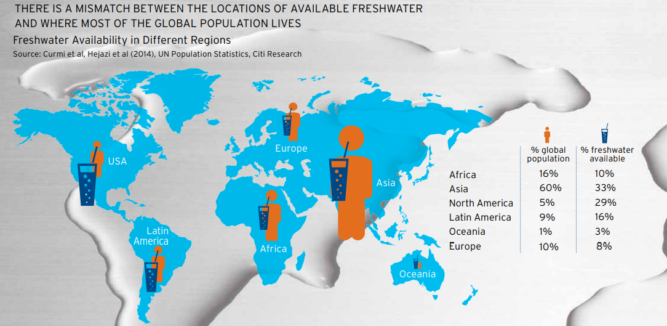

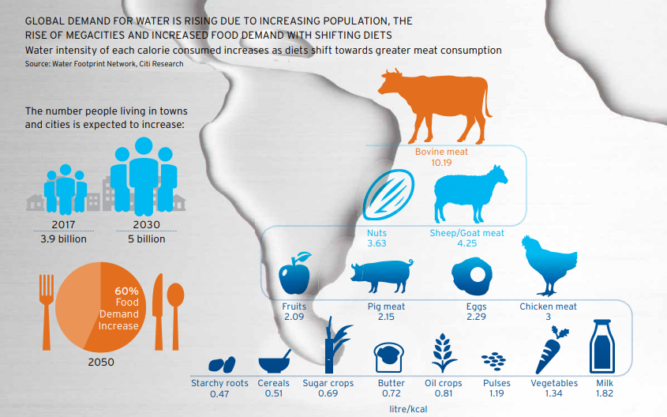

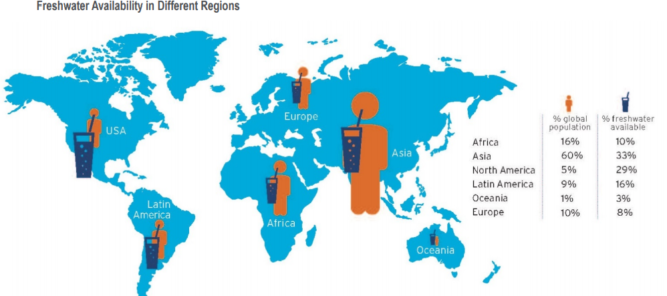
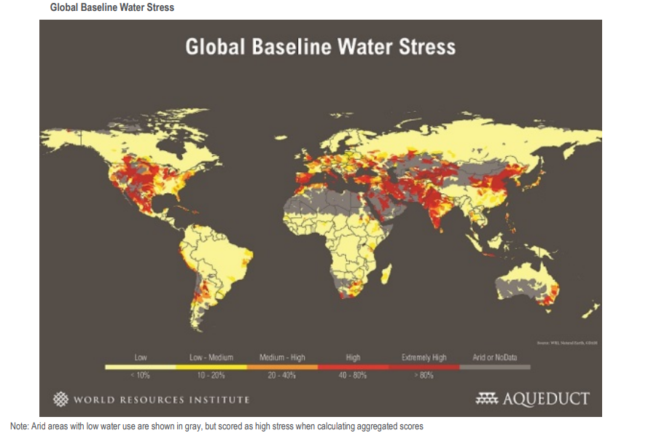
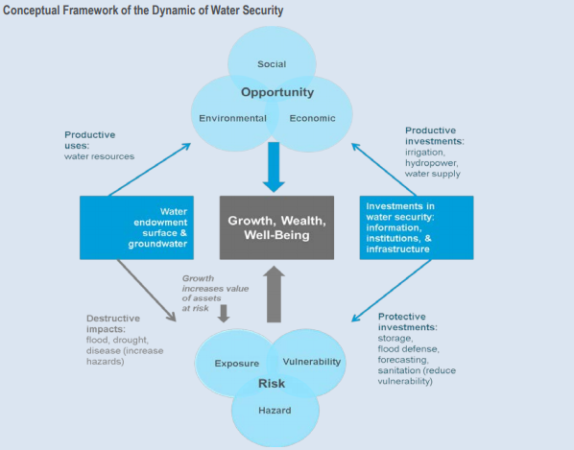
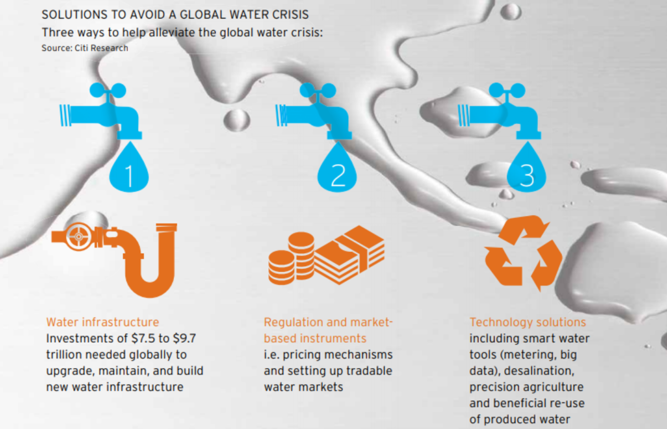
Recent Comments